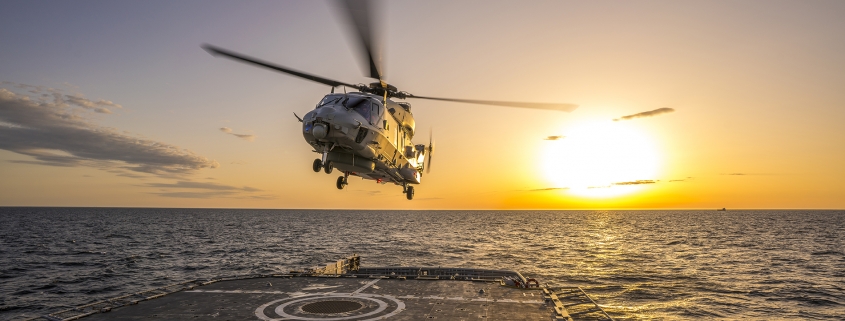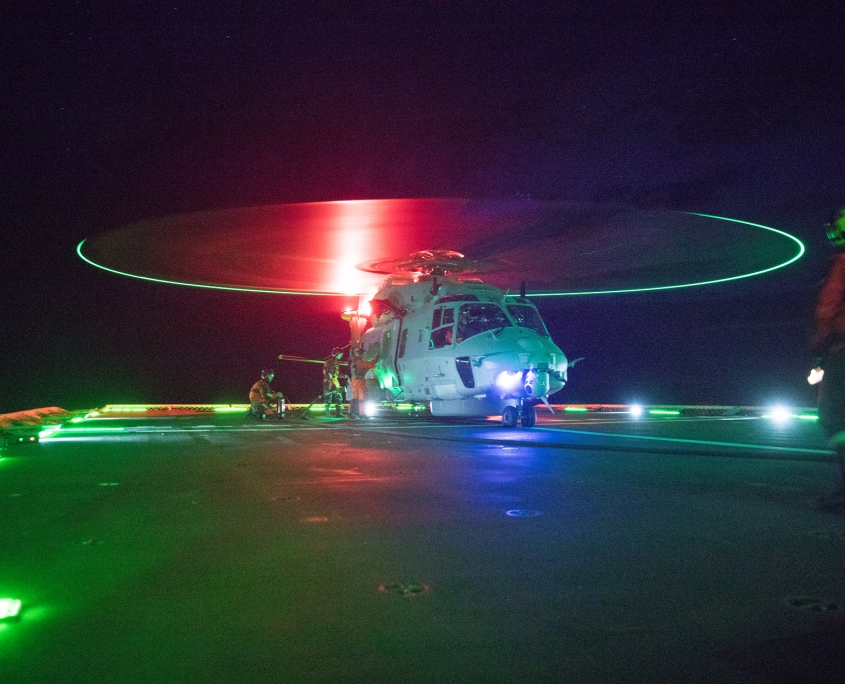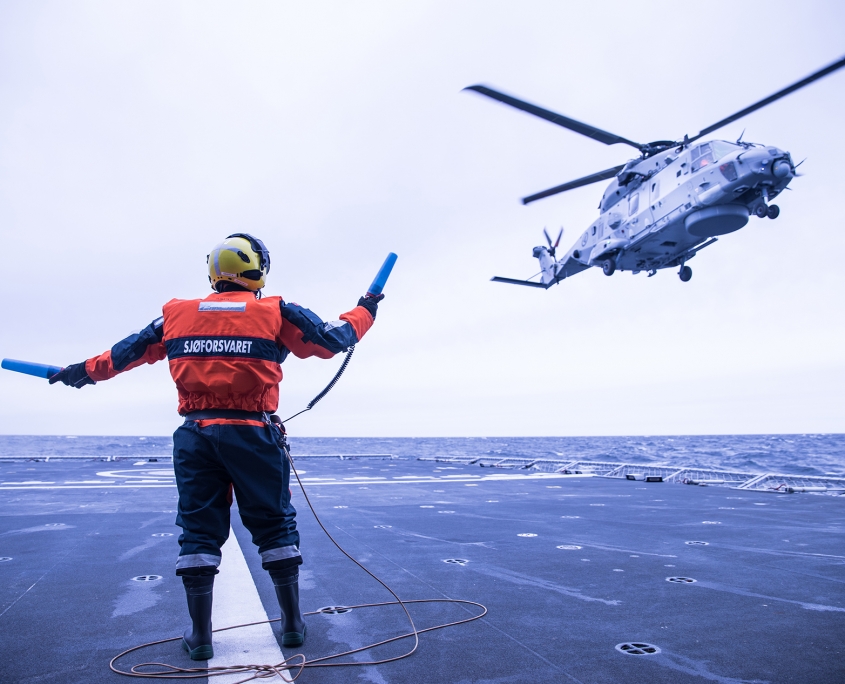The Norwegian navy recently tested helicopter/ship landings in the North Sea. The object was to determine the operational limits within which NH90 helicopters could land safely on two Norwegian ships in open sea. The method used for that purpose, developed by NLR in association with the Dutch navy, produced a significant saving on the costs of the tests. It offers the Norwegian navy a cost-effective method to enhance the performance of civil and military operations involving helicopters.
Helicopters that need to land on ships must take into account factors such as wind speed, wind direction, ship movements and spray. The operational limits for safe landing – known as ‘Ship‑Helicopter Operational Limitations’ (SHOLs) – were traditionally determined solely by tests at sea. In the 1980s, however, the Dutch navy commissioned NLR to develop a test method for substantially reducing the number of test hours at sea so as to lower the costs of testing. The method includes testing ship models in the wind tunnel of DNW to obtain a picture of the airflow around ships. The second phase of the method consists of shore-based trials that expose helicopters to different wind speeds on land. The resulting candidate flight envelope, i.e. the combination of the data obtained from wind tunnel tests and on-shore tests, then has to be tested in real life at sea and ultimately validated. Factors that play a role include the speed of the ship and the ship’s movements, the spray thrown up by waves and the visual reference and workload of the helicopter pilots.
The North Sea tests were overseen by Dutch company AeroMath and NLR. A total of 308 landings were carried out, with an average of one landing every four minutes. Such tests normally take four weeks and require 80 hours of flying time. Thanks to the NLR method, which over the years has been refined together with AeroMath, it was possible to suffice with half the number of flying hours and to complete the tests in one week. The reduction of the number of flying hours combined with the reduction of the number of sailing hours of the accompanying ships produced a great cost saving for the Norwegians.
The NLR method will help to improve the cost-effectiveness of the use of helicopters in civil and military tasks performed by the Norwegian and Dutch navies, and will assist them in conducting their primary task of ensuring safety at and from sea. The method was most recently used for Korean helicopter manufacturer KAI and can also be offered to navies of other friendly nations. NLR’s SHOL method reflects its strategic ambition to increase the deployment capabilities of military platforms for defence purposes.




 NLR
NLR